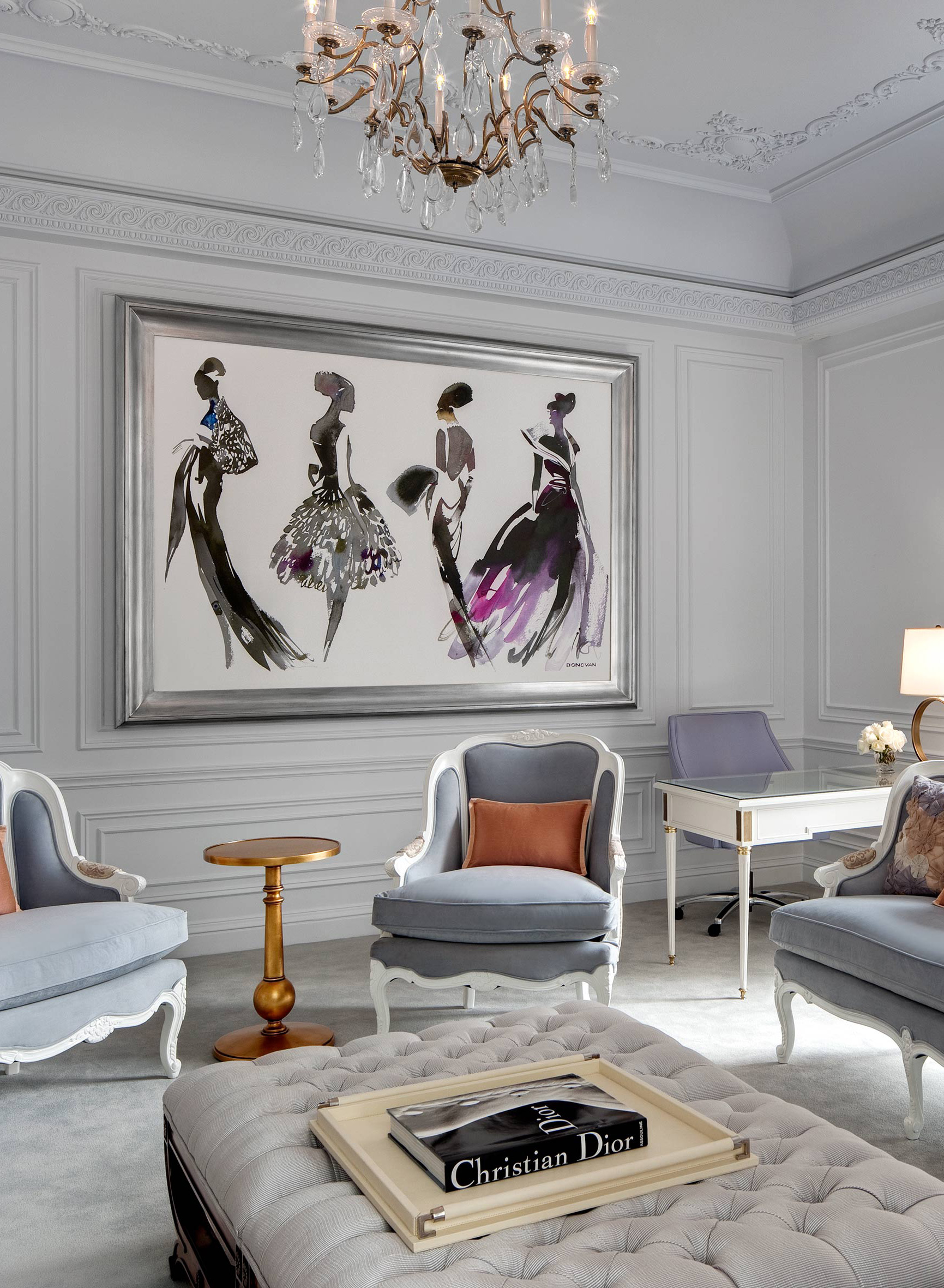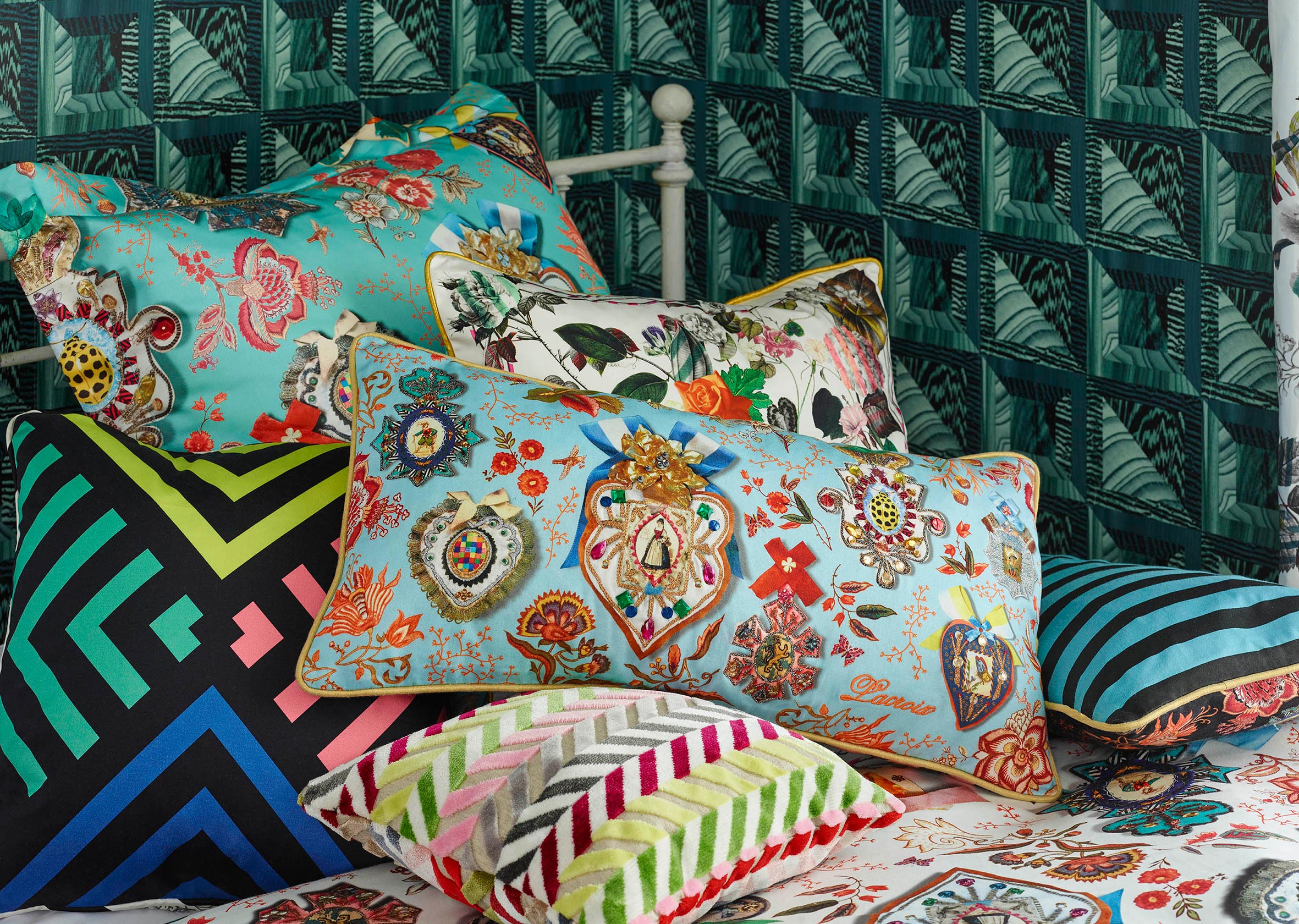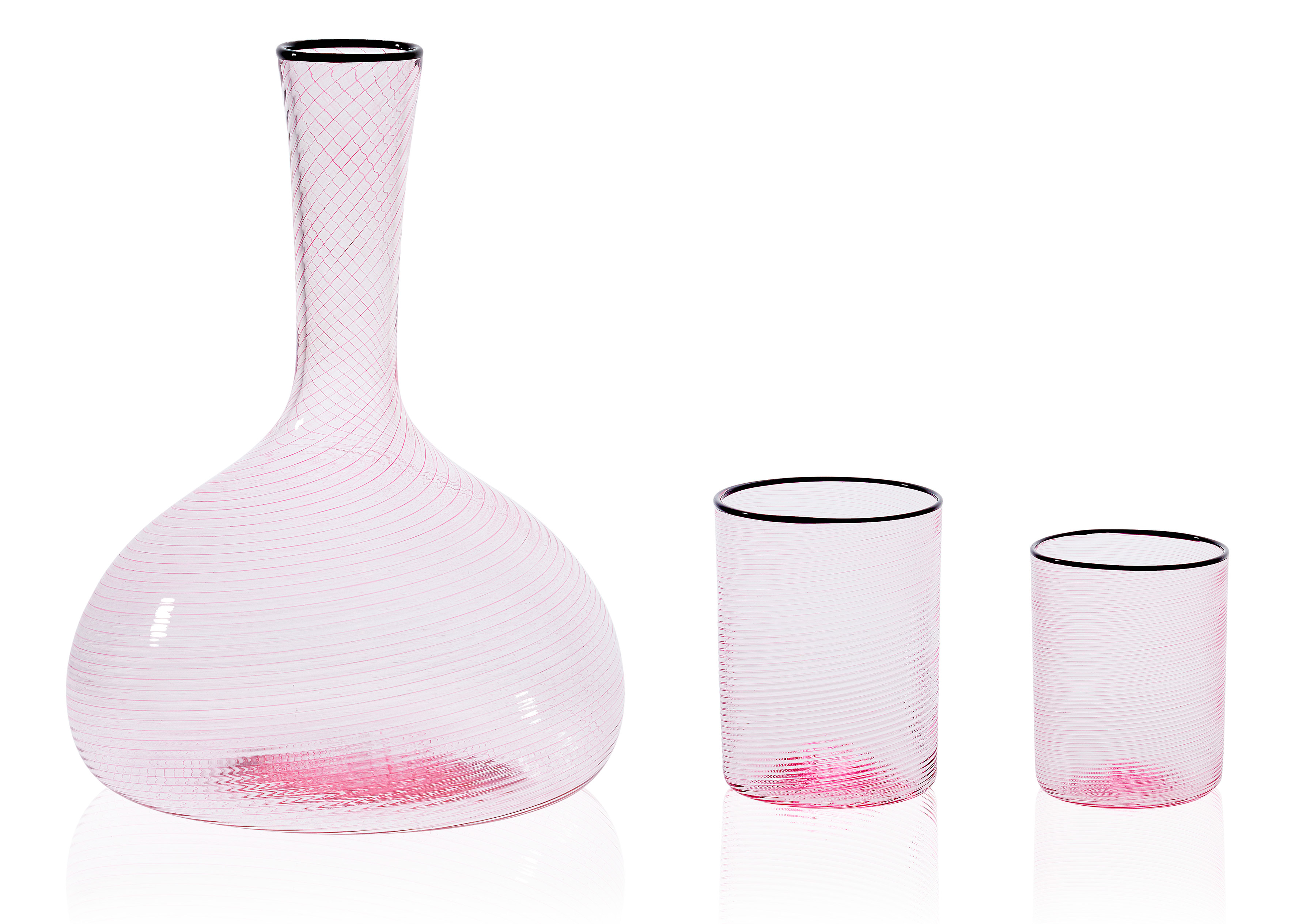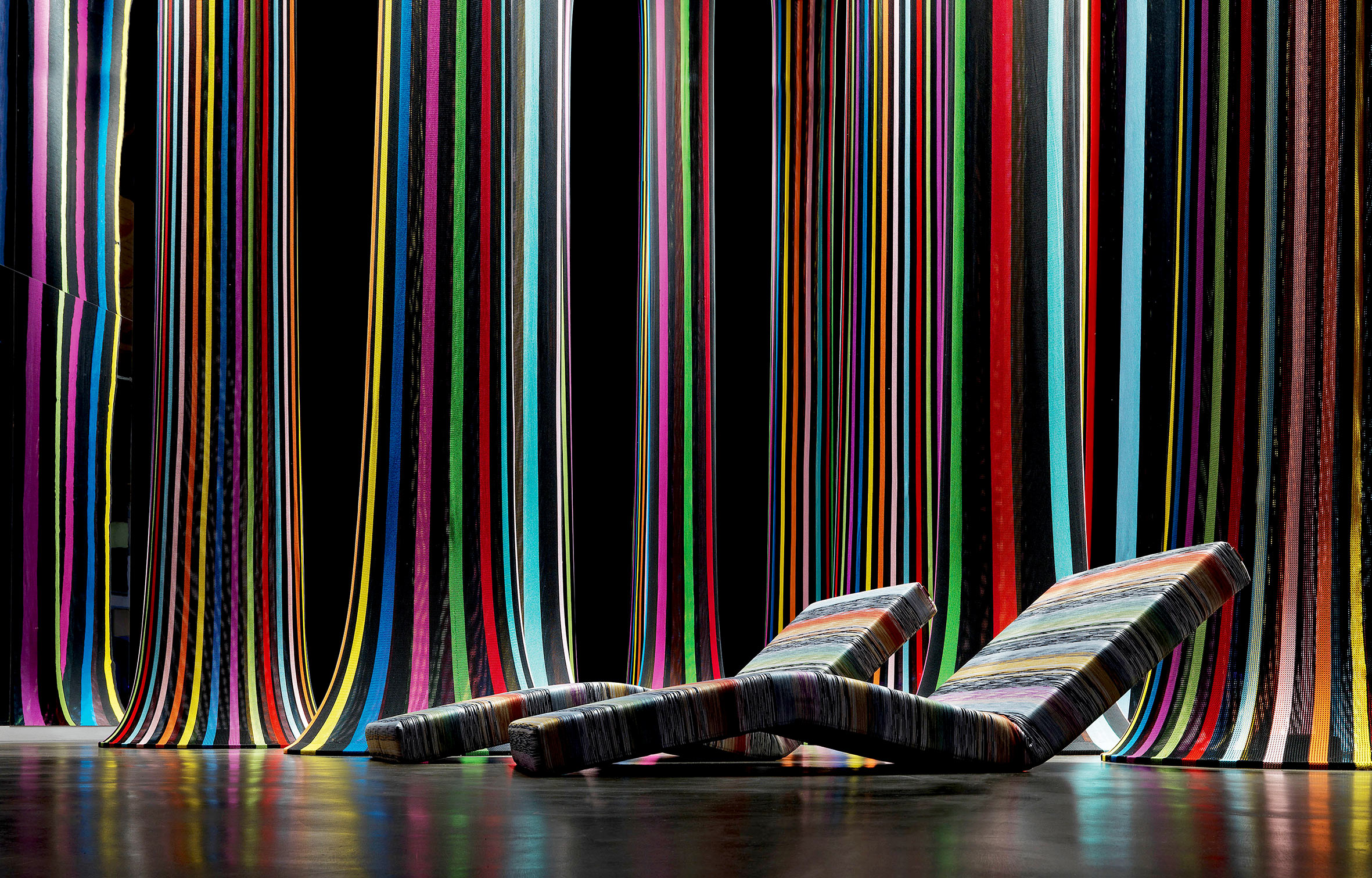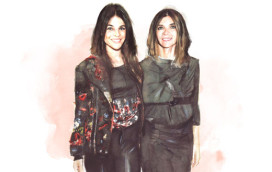It was the late brilliant retailer Joseph Ettedgui who opened our eyes to the charms of interspersing some arresting, avant-garde furniture in among the fashion at his eponymous shop in London’s Fulham Road. The sight of one of André Dubreuil’s whimsical chairs lurking right next to the ball gowns seemed at the time to be shockingly adventurous, but it had the interesting effect of each enhancing the allure of the other.
These days, combinations of this sort are everywhere – from Carla Sozzani’s 10 Corso Como in Milan to fashion designer Margaret Howell’s collection of mid-century furniture, which she dots between her signature shirts and gymslips. But many of the big fashion brands have taken the notion even further and have diversified into designing their own ranges of chairs and sofas, tableware and fragrance, as well as applying their imprint to such things as hotels, yachts and almost anything else that seems to take their fancy. Brand extension is what they call it – and most of them are at it. The cynical explanation for why it has become so ubiquitous is that it seems the logical way to sell more things to more people. If he/she likes the clothes, chances are they’ll like the sofa, the lamp, the cushion, even the chess set. Many of the great brands, run by some of the canniest businessmen and women in the world, have further observed that the word “lifestyle” is on an awful lot of lips. The woman who buys, for example, an Armani dress is tapping into a very precise aesthetic and – so the thinking goes – if she is sympathetic to the Armani world she is more than likely to want to surround herself with everything else the great man designs.
Key to the success of this approach is what industry observers refer to as “authenticity”. It’s not enough to slap a name on a product; it should encapsulate the essential DNA of the brand. For example, when St. Regis decided to create a Bentley Suite on the 15th floor of the hotel, they went to enormous lengths to make sure it wasn’t just a name that was added but the craftsmanship for which the legendary carmaker is renowned. The seductive lines of the Bentley Continental are echoed in the curved, veneered walls of the living room; the mirrored ceiling and marble floors remind visitors of the interior of a car wheel, and a light installation subtly recalls the car’s headlights. Further Bentley Suites have followed at The St. Regis Dubai and The St. Regis Istanbul, while The St. Regis New York now also boasts an exquisite Tiffany Suite.
Here we see a brand extension with a shared aesthetic and most importantly, a genuine connection between the name and the end product. Bentley has extended this careful attention to the core values of its motor cars to a whole range of luxury products, from soft leather driving gloves to cashmere throws and leather weekend bags, all of which reflect what it calls “the design language of our cars”.
On the whole, though, the designers who have been keenest to extend their brand into home furniture and accessories have been the fashion designers. At this year’s Salone del Mobile furniture show in Milan, many of the big names displayed their home collections with the same enthusiasm and panache as their annual fashion shows. For instance, Hermès produces a small collection of finely honed pieces usually using exquisite leather, often combined with wood, from a calfskin-topped desk made from walnut to its vast range of fine china, many patterned with the equestrian themes that lie at the heart of the Hermès heritage.
At Bottega Veneta, Tomas Maier has carefully managed the brand’s extraordinary expansion based on what he calls “the four cornerstones: fine-quality materials, extraordinary craftsmanship, contemporary functionality, and timeless design”. His venture into furniture started in 2006 with a solitary bench. Today, in the splendid surroundings of Palazzo Gallarati Scotti, an 18th-century palazzo in the heart of Milan, there is a complete and very haute collection of everything from sofas to accessories, which he has sourced from an extensive range of ateliers and factories: glass artists in Murano, the fine porcelain manufacturer Königliche Porzellan-Manufaktur, and Poltrona Frau for seating. He, too, has created an affinity with St. Regis Hotels: in Rome and Florence guests can check into one-of-a-kind Bottega Veneta suites and enjoy the charms of both brands simultaneously.
Christian Lacroix has transferred his fascination with the rich imagery of the Camargue (the famous salt marshes that lie just south of Arles in the south of France) and his interest in ancient cultures and folklore that infused his fashion line onto a range of homeware that bears the distinctive Lacroix imprint. At Dolce & Gabbana the designers teamed up with Smeg, the celebrated Italian manufacturer of upmarket appliances, to come up with some extraordinary limited-edition fridges with historical medieval scenes hand-painted by local Sicilian artists, each of which took around 200 hours to complete and cost upwards of $40,000. And Swarovski, that maker of brilliant crystals, has corralled some of the biggest names in the world of design and architecture – Daniel Libeskind, Zaha Hadid, Ron Arad, Fredrikson Stallard to name just a few – to launch what it calls Atelier Swarovski Home.
The Italian house of Missoni was one of the earliest to see that the Missoni aesthetic could be happily transferred from fashion into home accessories. Anybody who knows anything about the brand can’t fail to see the deep and genuine connection between its fashion and the home line that Rosita Missoni, wife of the late Tai with whom she founded the brand way back in the 1960s, developed. She took the patterns she always loved – the stripes and zigzags, the waves, squares and tartans – and put them on to sheets and rugs, plates and towels. The home line is infused with the same joyousness, warmth and love of color that was the basis of their success in fashion.
Fendi is a more recent player in the game and it turned to that iconic Paris-based designer Maria Pergay to come up with seriously original and often quite challenging limited-edition pieces. The notion behind the collection, as Silvia Fendi put it, was to “highlight the bond between leather and fur workmanship, iconic Fendi materials, and Pergay’s steel design”. This translated into some extraordinary pieces such as her Cabinet Pétales, a polychrome stainless steel and lacquered wood cabinet finished with embossed leather that resembles a giant exploded flower, as well as a chair made from stainless steel with gold-plated bronze and leopard-pattern marquetry: all very Fendi.
Roberto Cavalli, another of Italy’s best-known fashion designers, also very recently decided that those who liked his frocks might like to surround themselves with a whole Cavalli look. Today, he offers a whole world of opulence: of gold-rimmed serving platters, of faux leopard-skin throws, of richly patterned linens, of sumptuous padded upholstery and highly decorated tableware.
Jonathan Anderson, Loewe’s creative director, has just launched some 15 pieces of furniture all linked to the Loewe world by the craft that goes into their making. His approach might perhaps be considered more curatorial than original design, in that he took a series of vintage 1930s pieces and then he applied leather marquetry to refresh or revive their forms. And finally, the latest to announce a foray into expanding its universe is one of the grandest of all names in fashion. The house of Dior, no less, opened its first Dior Homme Boutique in London, designed by superstar architect Peter Marino, with a collection of home objects made by 11 different designers ranging from Lucie de la Falaise and Yann Debelle de Montby to Michaël Cailloux and Marino himself. The great M. Dior himself was fond of saying that “living in a house that doesn’t reflect who you are is akin to wearing someone else’s clothes”.
While clearly at the core of all this activity there is a very simple and straightforward commercial aim – that of expanding the brand’s customer base and persuading more of those customers to buy more things – it seems that something more profound lies behind this thinking. Creating a whole world around a brand seems not only to be a powerful way to create new energy around the name but to subtly change the way the brand is viewed. It gives far greater depth to the company’s narrative and it helps explain why they are busy devising ever more enterprising ways to get their story across to that modern phenomenon: the affluent, sophisticated and super-served global customer.
Your address: The St. Regis New York; The St. Regis Florence; The St. Regis Istanbul; The St. Regis Rome; The St. Regis Dubai
